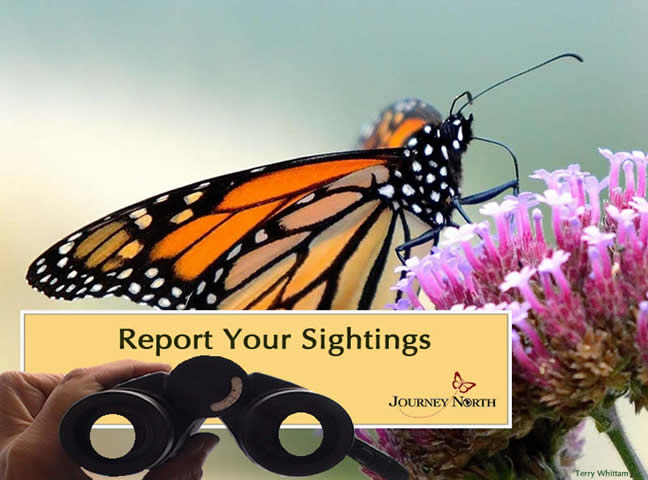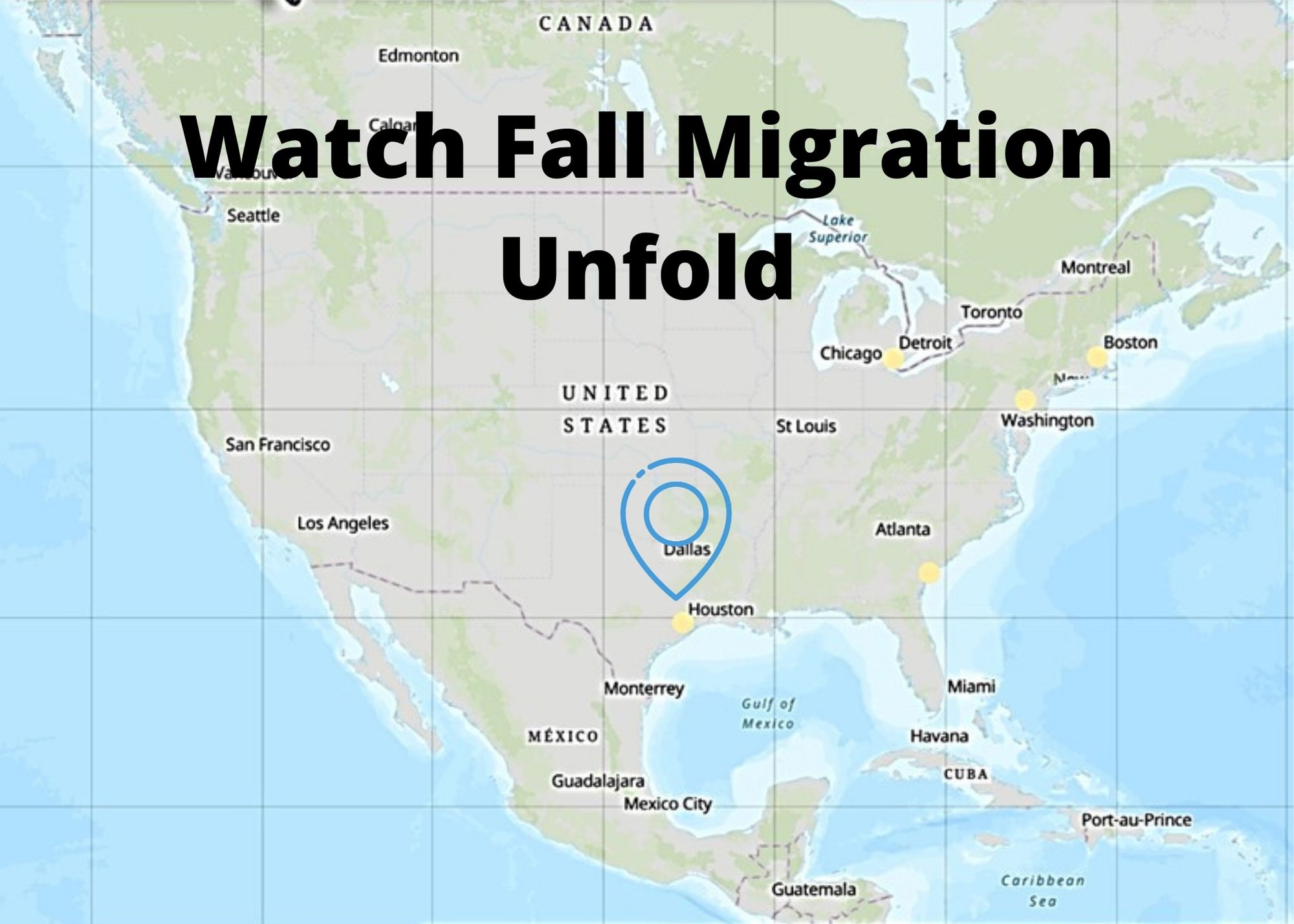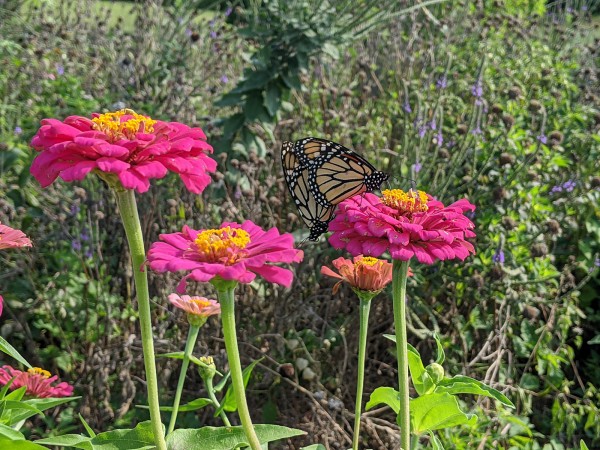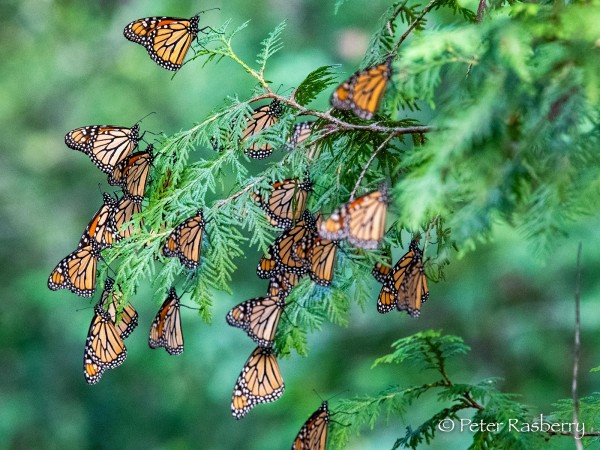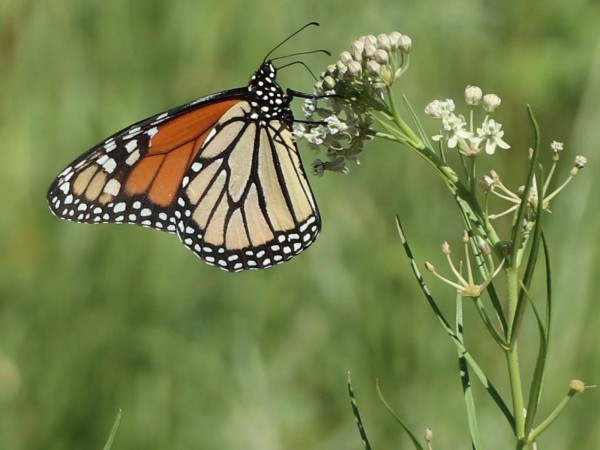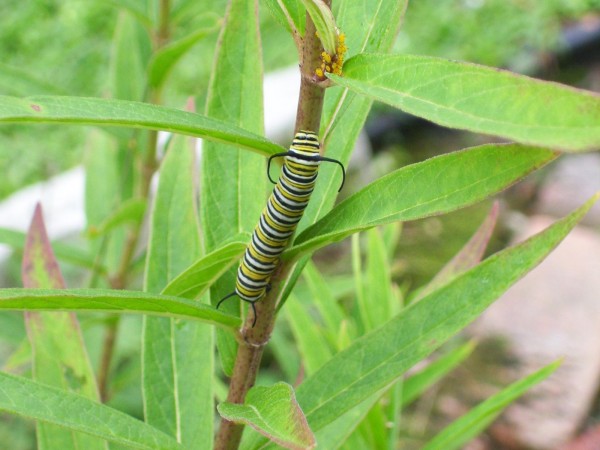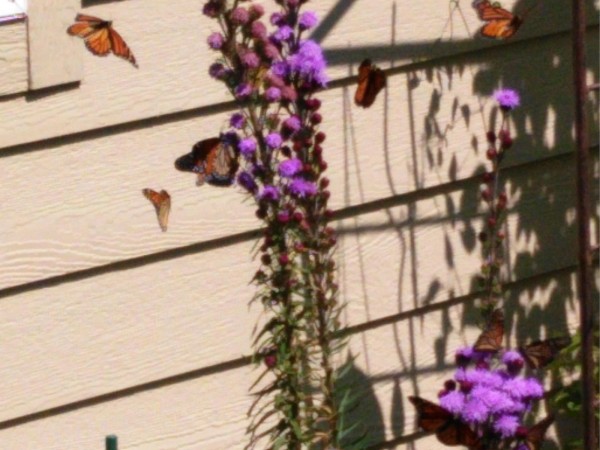Get Ready for an Exciting Fall Migration!
Monarch activity is ramping up as preparations for fall migration begin. When you see a monarch, we want to know. Report your observations of adult monarchs, eggs and larvae.
Multitasking Monarchs
Monarch activity is ramping up as preparations for fall migration begin. Journey North citizen scientists are reporting monarch breeding behavior and many observations of eggs, larvae, and nectaring adults. There have even been a few reports of fall roosts, a classic sign of fall migration. Has migration started? It is not unheard of to see fall roosts in mid-August. Each year is different. Explore our monarch migration maps to compare data year-over-year.
Diane in Macedonia, IA: "Two [monarchs] shown mating. Others were flying about and eating from the zinnias." (08/19/2021)
Peter in Northern Bruce Peninsula, ON: "First monarchs that I’ve observed in an annual roosting location near Tobermory, Ontario, Canada. They’ve crossed Lake Huron by island hopping and are resting/fuelling up for the next leg of the journey down the Huron shoreline to Point Pelee on Lake Erie - about 450km. Maybe 200 butterflies tonight, some nights this spot will hold thousands!" (08/20/2021)
James in Las Cruces, NM: "Monarch nectaring from whorled milkweed flowers in a narrow patch of plants established adjacent to coyote willow shrubs." (08/20/2021)
Judy in Newport News, VA: "Monarch Waystation #271 reports a 5th instar monarch larva resting on a Swamp Milkweed in the back yard under cloudy skies." (08/21/2021)
Joyce in Union City, CA: "This female Monarch flew in my backyard for an hour laying her eggs in the milkweed. It was a beautiful sight to see!" (08/21/2021)
Margie in Boone, NC: "Female monarch nectaring and laying eggs for over 20 minutes. 1st instar larva seen on swamp milkweed. Eggs deposited on swamp, tuberosa and common milkweed." (08/22/2021)
Linda in Saint Paul, MN: "1pm, monarchs feeding on meadow blazing star, first flower on a New England aster, and even a marigold. It's a hot, sunny, humid day. Lots of eating, no bickering." (08/23/2021)
Three Signs of Migratory Monarchs
1. Flying in directional flight
2. Clustering in overnight roosts
3. Nectaring intensely
Migrating monarchs change both physiologically and behaviorally. Declining daylength triggers the monarch’s migratory state. Beginning in mid-August in the north, adults are in diapause when they emerge from the chrysalis. They are full grown but not reproductively mature. Their reproductive development is on pause. These monarchs will not complete development and begin to mate until next spring in Mexico. The hormone deficiency that leads to diapause also leads to increased longevity. Breeding monarchs live only 2-6 weeks; migratory monarchs live up to 8 months.
What to Report
Here is a rundown of what to report during the fall migration season. Photos are always welcome and provide a voucher for your observation.
- Monarch Adult Sighted – Please report all adult monarchs (ie. butterflies, not eggs or larvae) that you see, whether or not you think they are migrating south. Reports should reflect the number of monarchs you observe at a single location. In your comments, tell us more about your observation. Were the monarchs exhibiting directional flight? How many adult monarch butterflies did you observe at this one location? How did you estimate the number of monarch observed?
- Monarch Egg Sighted – Please report all monarch eggs that you see and let us know milkweed species if known.
- Monarch Larva Sighted – Please report all monarch larvae that you see and let us know milkweed species if known.
- Monarch (OTHER Observations) – Other observations could include mating, laying eggs, nectaring (please let us know plant species if known), basking in the sun, and deceased monarch.
- Monarch PEAK Migration – People often report seeing large numbers of monarchs flying in a clear “directional” flight, or seeing “hundreds of butterflies” nectaring in a field of flowers fueling up for the long flight. If you witness what seems to be a large number of monarchs for your area (i.e. dozens, hundreds), please report this observation under PEAK Migration. For reported numbers to be meaningful, please let us know the length of time you spent counting monarchs.
- Monarch Fall Roost – Migrating monarchs cluster together in trees at night, forming what is called a roost. A roost may have a handful of butterflies or more than you can count. Fall roost reports should reflect the number of monarchs observed within a roost for a single night. In your comments, let us know when the roost formed, how you estimated the number of monarchs roosting, and other information (such as nearby nectar sources, species of tree(s) in roost, and whether the monarchs are shielded from the wind in their location).
Start reporting now — and continue to do so until you see your last monarchs of the season. Fall migration is here!


